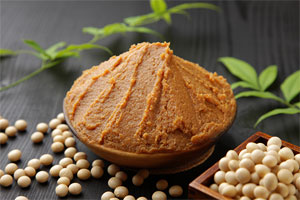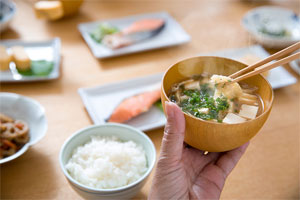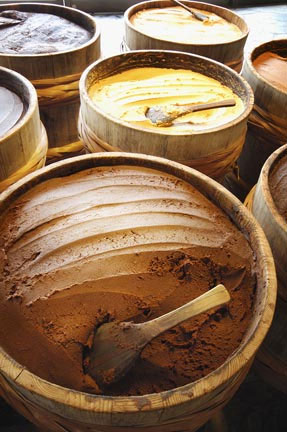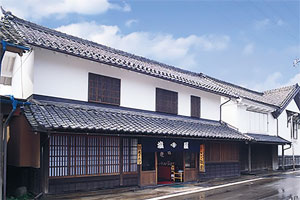

Miso Magic
|
On the topic of Japanese food, it is almost certain that miso will be mentioned. A traditional Japanese food made by fermenting soybeans, miso has long been a staple seasoning of Japanese cuisine that is packed with umami. It is believed to have been brought over from China during the 7th century. While evidence of miso-like food were discovered among Jomon period remains, it was only during the Heian period that we find written records about miso.
Miso is known for the plethora of health benefits, including being full of plant protein, vitamins, minerals, beneficial bacteria and enzymes and other nutrients. It also strengthens the immune system. There is even a Japanese proverb that translates to “Eating miso everyday keeps the doctor away”. Therefore, it should come as no surprise to see a typical Japanese household consuming miso soup every day, given that it is an easy and healthy way to enjoy miso and its benefits. In fact, research has shown that consuming a bowl of miso soup every day can lower the risk of breast cancer. Nagano prefecture is known to be the top producer and consumer of miso in Japan. Miso is made simply from soybeans, salt and koji (a type of fermentation starter that can range from barley to rice). However, the flavours can differ depending on the type and amount of ingredients. This results in a variety of miso from sweet to salty flavour, and white to reddish brown colour. Generally, miso with darker colours means that it has aged more, and the flavour is also stronger. The miso sold in stores would usually be aged from as short as 3 months, to as long as 2 years. In particular, Nagano prefecture produces Shinshu miso (or yellow miso), which is the most popular type in Japan. It is also very adaptable as it can be used in much cooking from soups to glazes. Furthermore, it is said that Nagano’s clear spring water plays a critical factor in producing delicious miso, as water is essential in many steps from washing to steaming the soybeans. The local climate also promotes slow maturation and fermentation of miso. If you wish to uncover more about Shinshu miso, there is no limit of places to visit. There are over 100 miso storehouses in Nagano prefecture, some of which have been producing miso for over 400 years. Many of them conduct tours and miso-making experiences. Otherwise, you can also make your own miso at the Handmade Miso Experience Centre, while also learning more about miso and touring the adjacent factory. You can be sure to walk away with a deeper appreciation for miso. |
 © Web Japan  © Web Japan  © AFLO  © Web Japan |
Resources
|
“Nagano: Miso Soup”. 2020. Web Japan. Accessed 16 January. https://web-japan.org/kidsweb/local/miso-soup/. “It’s Lunchtime”. 2020. Channel NewsAsia. https://www.channelnewsasia.com/japan-hour/its-lunchtime-2056716. “A flavorful, nutritious Japanese fermented food - MISO”. 2022. Nagano Prefecture. Accessed 16 January. https://www.nagano-brand.net/en/miso_editorial/. “Handmade Miso Experience Center”. Hanamaruki Foods Inc. 2015. Accessed 16 January. https://misotaiken.jp/en/. Lim, Anna. 2015. “The art of miso | why you should eat miso daily?”. The Soup Spoon. https://www.thesoupspoon.com/the-art-of-miso-why-you-should-eat-miso-daily/. |
|
Japan Creative Centre 4 Nassim Road, Singapore 258372 +65 6737 0434 / jcc@sn.mofa.go.jp https://www.sg.emb-japan.go.jp/JCC/ Nearest parking at Orchard Hotel & Delphi Orchard |
 |